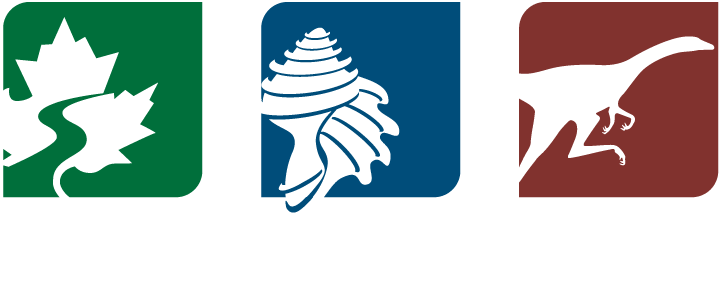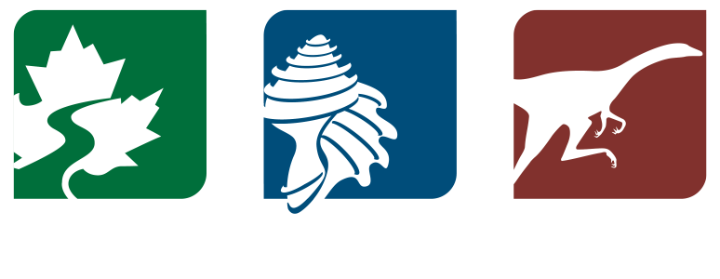Judy Terry Smith
Judy Terry Smith
Judy Terry Smith
Invertebrate Paleontologist
Judith (“Judy”) Terry Smith is an invertebrate paleontologist. She works on fossil mollusks (shelled invertebrates like clams and scallops) from Baja California, Mexico.
Judy received her bachelor’s degrees from Barnard College, a women’s college associated with Columbia University in New York City. She went to graduate school on the opposite coast, receiving master’s and doctoral degrees in geology from Stanford University in the 1960s. At that time, women had few opportunities for employment or academic scholarships. Female paleontologists were rare, and Judy was assigned the only woman mentor in the department, A. Myra Keen. In 1964, Judy and two others were the first women allowed to attend Stanford’s Summer Field Geology course.
After graduate school, Judy worked in a National Research Council/USGS Postdoctoral Research Associateship studying giant pectinid scallops (examples of fossil scallops are shown below on this page). She later began her current project on the Cenozoic marine mollusks of Baja California, Mexico. She is currently a Research Associate in paleobiology at the Smithsonian Institution’s National Museum of Natural History, where she works on late Miocene Caribbean mollusks of the ancient Gulf of California. Judy’s research involves identifying fossil species and using them to understand the evolution of the ancient Gulf of California.
Judy edited a book of essays written by her uncle, a veterinarian who also managed The Sullivan Review, a local newspaper based in Sullivan County, Pennsylvania; it was published in 2015. In 2020, a species of pectinid scallop, Lyropecten terrysmithae, was named for her.
Daring to Dig Interview
In this interview, Judy talks about how she became interested in geology, her experiences as one of the few female geology students at Stanford University in the 1960s, and how she became involved in researching fossils from Baja California, Mexico.
Fossil pectinid scallops
The images below show fossil pectinid scallops from scientific publications. The scallop on the left is from a publication by Judy. The scallop on the right is the species named for her. (Click on the images to view at full size and see complete captions.)
Selected technical works by Judy Terry Smith
Carreño, A.L., and J.T. Smith. 2007. Stratigraphy and correlation for the ancient Gulf of California and Baja California Peninsula, Mexico. Bulletins of American Paleontology 371, 146 pp. Link
Smith, J.T. 1978. Primary types in the Stanford Paleontological type collection. Bulletins of American Paleontology 72: 313–552. Link
Smith, J.T. 1984. Miocene and Pliocene marine mollusks and preliminary correlations, Vizcaíno Peninsula to Arroyo la Pirísima, northwestern Baja Califorlnia Sur, Mexico. Pp. 197–217 in V.A. Frizzell, Jr. (ed.), Geology of the Baja California Peninsula. Pacific Section, Society of Economic Paleontologists and Mineralogists.
Smith, J.T. 1989. Contrasting megafaunal and sedimentary records from opposite ends of the Gulf of California: Implications for interpreting its Tertiary history. Pp. 27–36 in P.L. Abbott (ed.), Geologic studies in Baja California. Pacific Section, Society of Economic Paleontologists and Mineralogists, Book 63. Link
Smith, J.T. 1991. Cenozoic giant pectinids from California and the Tertiary Caribbean province: Lyropecten, “Macrochlamis,” Vertipecten, and Nodipecten species. U.S. Geological Survey Professional Paper 1391, 155 pgs. Link
Books edited by Judy Terry Smith
Shoemaker, T.W. 2015. The Satterfield Flyer: Adventures of a country veterinarian and newspaper editor in Sullivan County Pennsylvania. PAYNE Printing, Dallas, Pennsylvania. Edited by J.T. Smith.
Further reading
Powell, C.L., II, C.D. Millard, and C. Garcia. 2020. A new Lyropecten (Pectinidae, Bivalvia, Mollusca) from the central California Miocene. PaleoBios 37: 1–12. Link
The Sullivan Review: Welcome. No date. Link
Video & audio content
Smithsonian’s Digitization Program Office: Smithsonian Digitization: Impact of Digitizing Paleobiology Collections. Vido, 25 June 2018, via YouTube. Link
WVIA Public Media: Judith Terry Smith. Audio, 27 May 2019, via Soundcloud. Link




